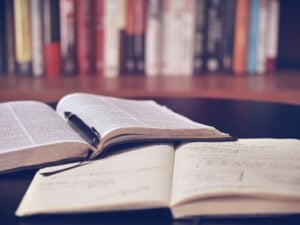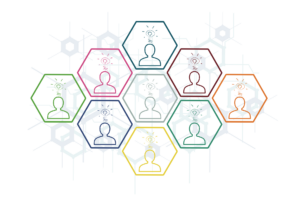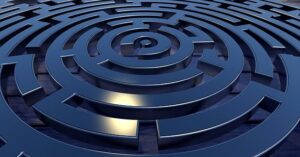Reshaping Innovation With Generative AI
Companies are already using generative AI in their innovation initiatives, to create products and services from new beers to furniture. The innovation process, from ideation and strategy to go-to-market, is up for grabs as far as AI is concerned. In other words, early adopters are already making an impact with generative AI playing a role in faster decision-making, facilitating the strategic process, generating insights and analyzing data faster than humans can. AI can already often generate “infinite” ideas and then curate those ideas, exploring many solutions to solve the problem at hand. Design is also being reshaped by generative AI design tools.
In the Board of Innovation’s blog on the subject, “The role of generative AI in your innovation process,” the firm looks at the strides AI has made already, and looks ahead at the growing developments and implications of AI. “AI models trained on all strategic frameworks, with access to decades of data, case studies, etc. will soon outperform traditional strategy consultants on set tasks,” the company asserts. “Trained on proprietary company data it will help you generate strategic insights, explore different future scenarios, and inform decision making.”
The Board of Innovation further predicts that not only will AI streamline the ideation, strategy and design process, but also the go-to-market strategies that follow: “Creative AI can run many tasks that are essential for marketing and running a business. It can write persuasive messages, build websites, create models for ad campaigns, and run customer service. This may seem like a distant future, but it is closer than we might think.” Will marketing and branding become hyper-personalized, as the Board of Innovation predicts?
AI: Catalyst or Killer?
All Things Innovation has explored the subject of AI several times, looking at the impact in terms of innovation, insights and analytics. Contributor Gail Martino, Senior Program Manager, Unilever, gave a firsthand look at her experience with AI, in “15 Second Workday.” She related, “This morning I generated 40 new product ideas with concepts and ad copy to accompany each. It took 15 seconds. This is just a small fraction of what a new artificial intelligence program, ChatGPT, can do. It’s clear – AI has developed to such an extent that it will revolutionize our way of working, probably within 12 months for some fields. As an innovator, if you are not following the recent developments in AI, you will be left behind quickly.”
Martino also wrote about AI’s role in a specific product creation, in “AI Photo Shoot: Innovation Catalyst or Killer?” In a groundbreaking move, Glamour magazine in Bulgaria unveiled the first-ever magazine cover shoot entirely generated by AI. Martino weighs in on the implications that AI could have for innovators and marketers.
How AI Is Augmenting Human Creativity
Despite an inherent bias, we decided to ask a pointed question directly at ChatGPT: Will generative AI replace human innovation? Generative AI answered that while it has the potential to augment and enhance human innovation, it is unlikely to replace it entirely. Here are some key points to consider:
- Complementary Role: Generative AI can assist humans in various creative tasks, such as generating content, suggesting ideas, and automating repetitive tasks. This can free up human innovators to focus on higher-level thinking and problem-solving.
- Tools for Creativity: AI can be seen as a tool that humans can use to amplify their creative abilities. It can provide inspiration, generate alternative solutions, and speed up the creative process.
- Human Expertise: Human innovation is deeply rooted in expertise, emotions, values, and context, which AI lacks. While AI can produce content, it doesn’t possess true understanding, consciousness, or a sense of purpose. Many innovative breakthroughs come from human insight, empathy, and the ability to navigate complex moral and ethical dilemmas.
- AI Limitations: Generative AI is limited by the data it has been trained on and the algorithms it uses. It may produce biased or flawed results, and it can’t replace domain-specific expertise. It’s a tool that requires human oversight.
- Ethical and Regulatory Challenges: The deployment of AI in creative and innovative processes raises ethical questions about authorship, responsibility, and bias. Regulatory frameworks and societal norms will likely play a role in shaping the boundaries of AI’s role in innovation.
- Collaboration: The future of innovation may involve greater collaboration between humans and AI. Innovators may use AI as a creative partner or a source of inspiration, combining the strengths of both human and machine intelligence.
- AI as a Catalyst: AI can also be a catalyst for new types of innovation. For example, the development of AI technologies has led to advances in healthcare, robotics, and materials science, which can in turn inspire human innovation.
ChatGPT concluded that while generative AI has the potential to be a valuable tool in the creative and innovative process, it is unlikely to replace human innovation entirely. Instead, it is more likely to complement human creativity and problem-solving, potentially accelerating the pace of innovation and opening up new possibilities.
The Future of Humans & AI
While we are just at the beginning of AI’s evolutionary developments, there are of course limitations and drawbacks as well. Just how to balance innovation and interaction between humans and AI has yet to be determined. The question of trademarks, patents, and regulations is still being debated. Further, the quality of data and diversity of data can negatively influence AI’s responses, creating unintended biases and other possible errors.
The success and future of AI comes down to the adoption of the technology by humans, with all of our flaws inherent in the systems we create. The marketplace too will play a role in the impact of AI, and will still validate if ideas are successful or not. “Another example of the importance of humans in GenAI is in the ideation process,” notes Board of Innovation. “While generative AI lets us generate hundreds of ideas, in no time, AI may struggle to comprehend the subtle nuances, emotions, and cultural contexts that are integral to ideation.” Humans, therefore, are still key to monitoring the innovation process.
We will let a human have the last word: “AI will not replace innovators. But innovators who use AI will replace those who don’t,” concludes Phil De Ridder, CEO, Board of Innovation.
Video courtesy of Y Combinator
Contributor
-

Matthew Kramer is the Digital Editor for All Things Insights & All Things Innovation. He has over 20 years of experience working in publishing and media companies, on a variety of business-to-business publications, websites and trade shows.
View all posts




























































































































